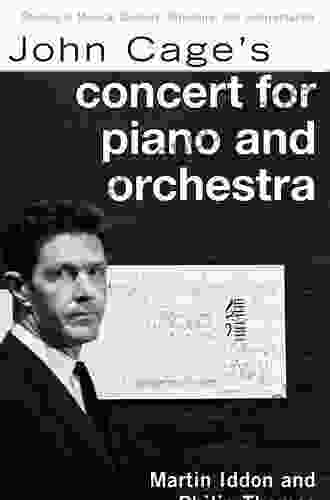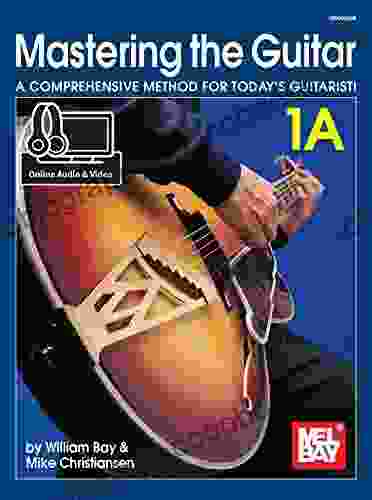John Cage Concert For Piano And Orchestra Studies In Musical Genesis Structure

: Unveiling the Musical Enigma of John Cage's Masterpiece
John Cage's Concert for Piano and Orchestra stands as a seminal work in the annals of 20th-century music. Composed between 1957 and 1958, this groundbreaking piece shattered conventional norms, challenging traditional notions of musical structure, tonality, and performance. In this comprehensive analysis, we embark on an immersive journey into the genesis, structure, and profound impact of Cage's masterpiece.
Genesis: The Birth of an Unconventional Musical Concept
The genesis of Concert for Piano and Orchestra can be traced to Cage's fascination with chance operations and the incorporation of non-musical elements into his compositions. Inspired by the Chinese divination method known as the I Ching, Cage sought to introduce elements of randomness and indeterminacy into his music. Through a series of coin tosses, he determined the duration, pitch, and instrumentation of each musical section.
4 out of 5
| Language | : | English |
| File size | : | 21732 KB |
| Text-to-Speech | : | Enabled |
| Screen Reader | : | Supported |
| Enhanced typesetting | : | Enabled |
| Word Wise | : | Enabled |
| Print length | : | 475 pages |
| Lending | : | Enabled |
The resulting score became a multi-layered document, consisting of both traditional musical notation and graphic instructions. Performers were given the freedom to interpret the score within certain parameters, resulting in a unique and ever-changing musical experience.
Structure: A Labyrinth of Sonic Exploration
Concert for Piano and Orchestra is a complex and multi-faceted work that defies conventional categorization. Its structure revolves around a series of independent sections, each with its own distinct character and instrumentation. These sections are connected by silences, ranging in length from a few seconds to several minutes.
The piano part, often sparse and atmospheric, serves as a thread that weaves through the orchestral tapestry. The orchestra, on the other hand, explores a wide range of sounds and textures, from delicate wisps to thunderous climaxes. Cage's use of chance operations creates a sense of unpredictability, keeping the listener on the edge of anticipation.
Impact: A Catalyst for Musical Revolution
Cage's Concert for Piano and Orchestra had a profound impact on composers and performers alike. It challenged traditional notions of musical structure and opened up new avenues for experimentation. The work's embrace of indeterminacy and its emphasis on the performer's freedom of interpretation inspired a generation of musicians to push the boundaries of musical expression.
Composers such as Karlheinz Stockhausen, Luciano Berio, and Pierre Boulez were deeply influenced by Cage's innovations. The work's influence can also be seen in the emergence of minimalism, with composers such as Steve Reich and Philip Glass adopting Cage's focus on simplicity and repetition.
Performers too were captivated by Cage's Concert for Piano and Orchestra. The work's open structure and its emphasis on collaboration inspired a new level of engagement with the audience. Pianists such as David Tudor and Martha Argerich became renowned for their virtuosic performances of the piece.
Musical Analysis: Deconstructing Cage's Sonic Masterpiece
A closer examination of Concert for Piano and Orchestra reveals a carefully structured work that defies easy categorization. The piece opens with a sparse piano , followed by a series of orchestral gestures that gradually increase in intensity. The piano part remains relatively subdued throughout, providing a sense of continuity amidst the orchestral turmoil.
The middle section of the work introduces a period of sustained stasis. The orchestra subsides, and the piano takes center stage, playing a series of delicate and introspective passages. This section provides a moment of respite before the work's final eruption.
The work culminates in a massive orchestral climax, followed by a series of diminishing echoes. The piano re-enters, playing a simple and haunting melody that brings the piece to a close. The final silence lingers, leaving the listener suspended in a state of contemplation.
Legacy: A Work that Continues to Inspire
More than half a century after its premiere, John Cage's Concert for Piano and Orchestra remains a seminal work in the history of music. Its innovative structure, its embrace of chance, and its emphasis on performer's freedom continue to inspire composers and performers alike.
The work has been performed countless times around the world, and it has been recorded by some of the most renowned musicians of our time. Its influence can be seen in a wide range of musical genres, from classical to contemporary to jazz.
Concert for Piano and Orchestra is a testament to John Cage's genius and his unwavering commitment to pushing the boundaries of musical expression. It is a work that continues to challenge and inspire, reminding us of the infinite possibilities that lie within the realm of sound.
: A Triumph of Musical Innovation
John Cage's Concert for Piano and Orchestra stands as a triumph of musical innovation. Its groundbreaking structure, its embrace of chance, and its emphasis on performer's freedom have made it a cornerstone of 20th-century music. The work's legacy continues to inspire and challenge composers and performers, ensuring its place as a masterpiece that will continue to resonate for generations to come.
4 out of 5
| Language | : | English |
| File size | : | 21732 KB |
| Text-to-Speech | : | Enabled |
| Screen Reader | : | Supported |
| Enhanced typesetting | : | Enabled |
| Word Wise | : | Enabled |
| Print length | : | 475 pages |
| Lending | : | Enabled |
Do you want to contribute by writing guest posts on this blog?
Please contact us and send us a resume of previous articles that you have written.
 Book
Book Novel
Novel Page
Page Chapter
Chapter Text
Text Story
Story Genre
Genre Reader
Reader Library
Library Paperback
Paperback E-book
E-book Magazine
Magazine Newspaper
Newspaper Paragraph
Paragraph Sentence
Sentence Bookmark
Bookmark Shelf
Shelf Glossary
Glossary Bibliography
Bibliography Foreword
Foreword Preface
Preface Synopsis
Synopsis Annotation
Annotation Footnote
Footnote Manuscript
Manuscript Scroll
Scroll Codex
Codex Tome
Tome Bestseller
Bestseller Classics
Classics Library card
Library card Narrative
Narrative Biography
Biography Autobiography
Autobiography Memoir
Memoir Reference
Reference Encyclopedia
Encyclopedia Tanner Olson
Tanner Olson Angelica Malin
Angelica Malin Dan Roodt
Dan Roodt Aimee Phan
Aimee Phan Susan Kennedy
Susan Kennedy Alan Graham
Alan Graham Alesa Lightbourne
Alesa Lightbourne Alanna Okun
Alanna Okun Aleksandr Shulginov
Aleksandr Shulginov Robert Daudish
Robert Daudish Michael P Johnson
Michael P Johnson Tembi Locke
Tembi Locke Alan Patten
Alan Patten Thomas King
Thomas King Thomas Bernhard
Thomas Bernhard Min Zhou
Min Zhou Alan Duff
Alan Duff Janice Dockendorff Boland
Janice Dockendorff Boland Connie Long
Connie Long Dr Rumbidzai Nyanhoto
Dr Rumbidzai Nyanhoto
Light bulbAdvertise smarter! Our strategic ad space ensures maximum exposure. Reserve your spot today!
 Brent FosterFollow ·18.8k
Brent FosterFollow ·18.8k Clay PowellFollow ·3.1k
Clay PowellFollow ·3.1k Cooper BellFollow ·13.7k
Cooper BellFollow ·13.7k Ken SimmonsFollow ·4.6k
Ken SimmonsFollow ·4.6k Walter SimmonsFollow ·5.7k
Walter SimmonsFollow ·5.7k Josh CarterFollow ·3k
Josh CarterFollow ·3k Vincent MitchellFollow ·10.5k
Vincent MitchellFollow ·10.5k Sean TurnerFollow ·13.2k
Sean TurnerFollow ·13.2k
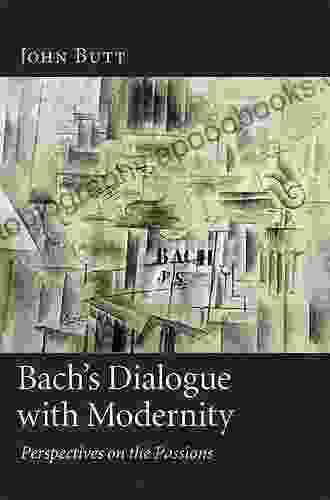
 W. Somerset Maugham
W. Somerset MaughamBach Dialogue With Modernity: A Journey Through Time and...
Prelude: Bach's Timeless...

 Ted Simmons
Ted SimmonsAsher Heroes At Heart Maryann Jordan: The Essential Guide...
Are you ready to...

 Paulo Coelho
Paulo CoelhoVienna Spies: Uncover the Hidden World of Espionage in...
Vienna has long...
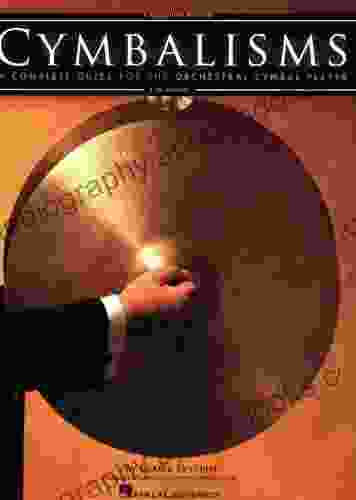
 Herman Melville
Herman MelvilleThe Complete Guide to Orchestral Cymbal Playing:...
Step into the vibrant...
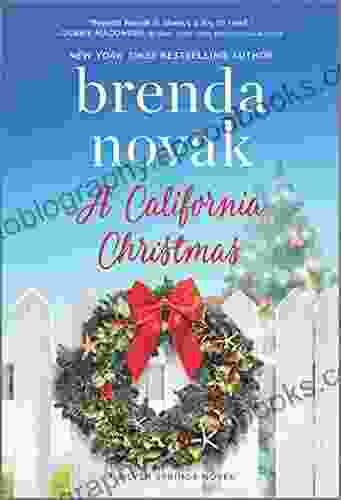
 Rubén Darío
Rubén DaríoEscape into a Holiday Haven with California Christmas...
Embark on a heartwarming and festive journey...
4 out of 5
| Language | : | English |
| File size | : | 21732 KB |
| Text-to-Speech | : | Enabled |
| Screen Reader | : | Supported |
| Enhanced typesetting | : | Enabled |
| Word Wise | : | Enabled |
| Print length | : | 475 pages |
| Lending | : | Enabled |


